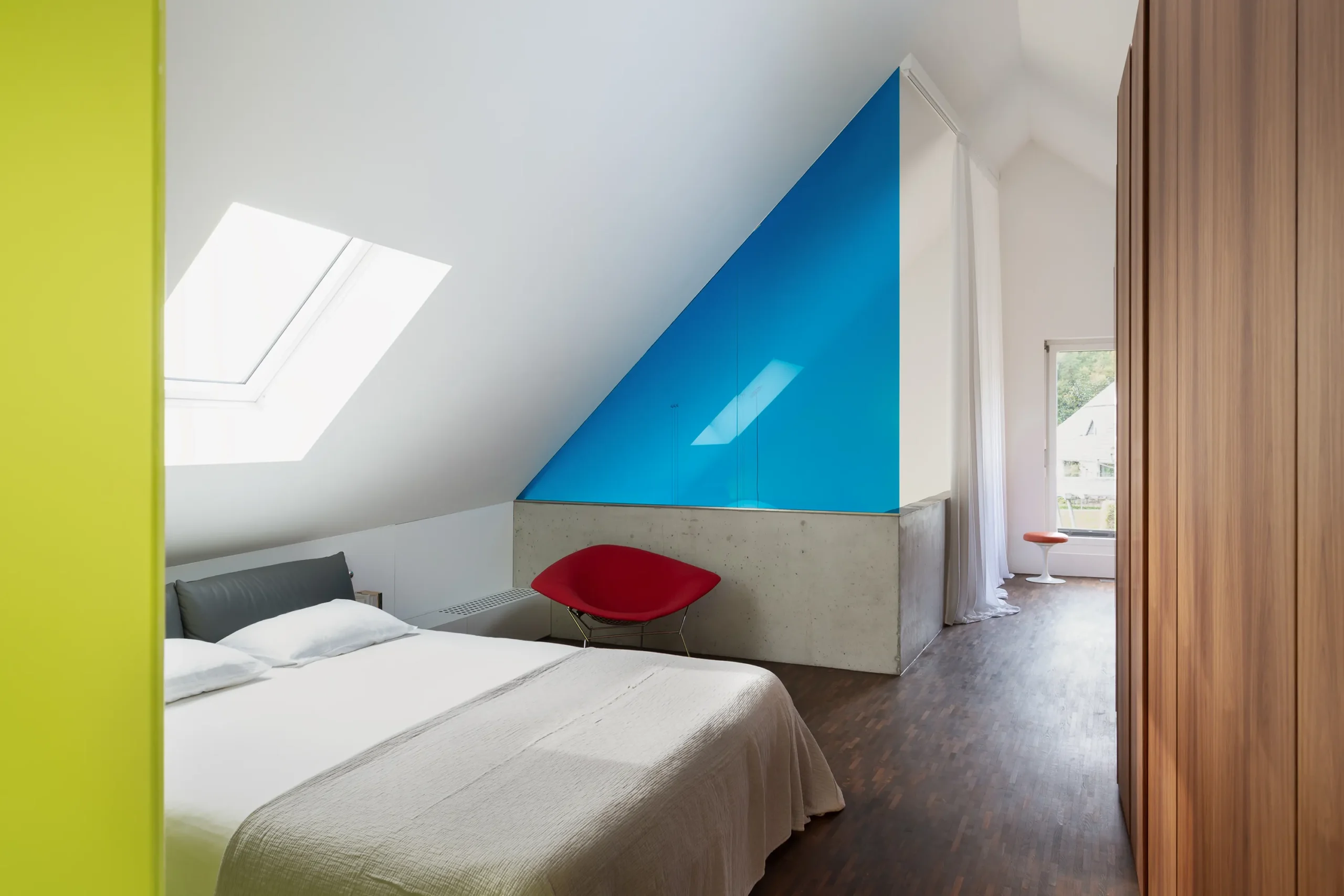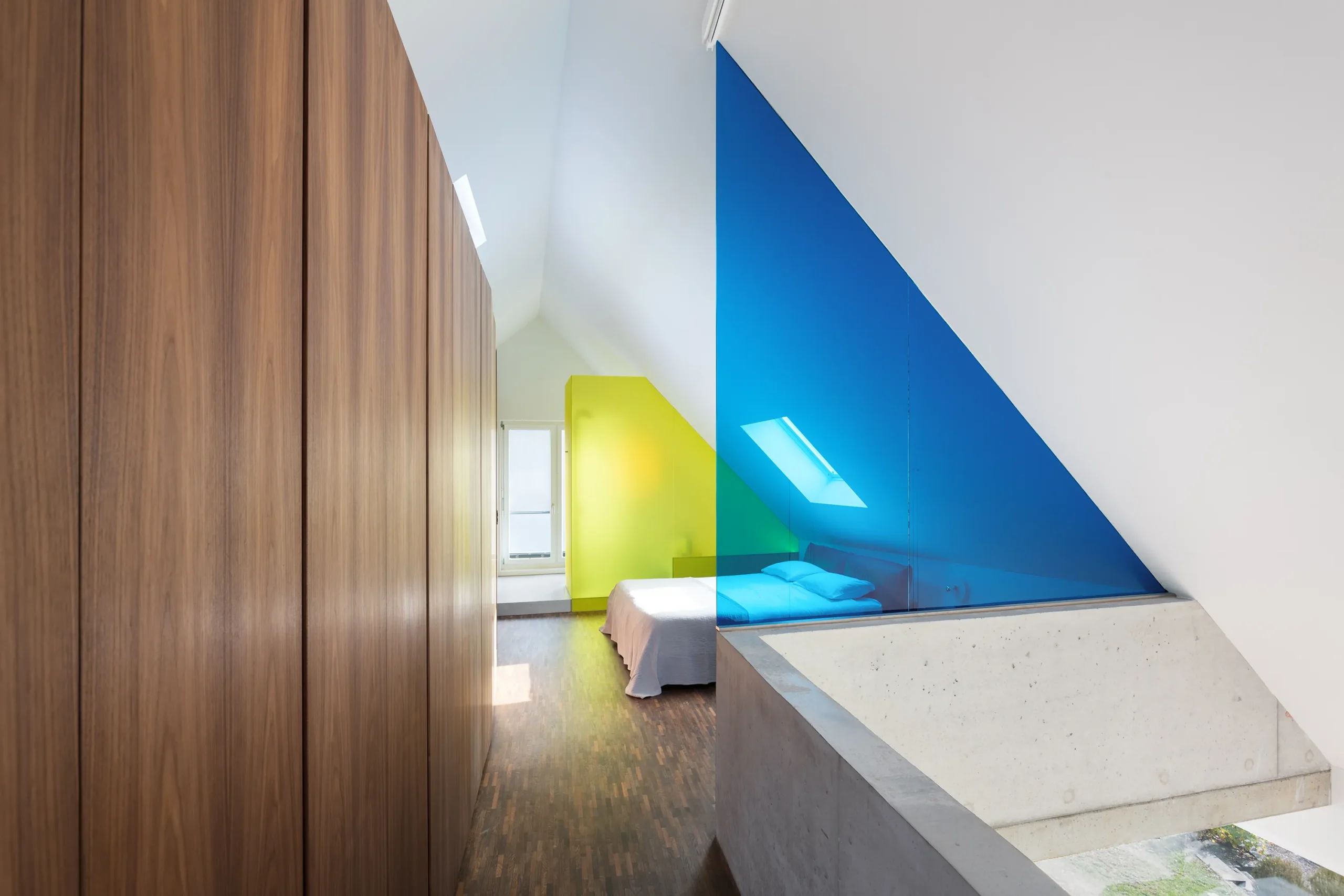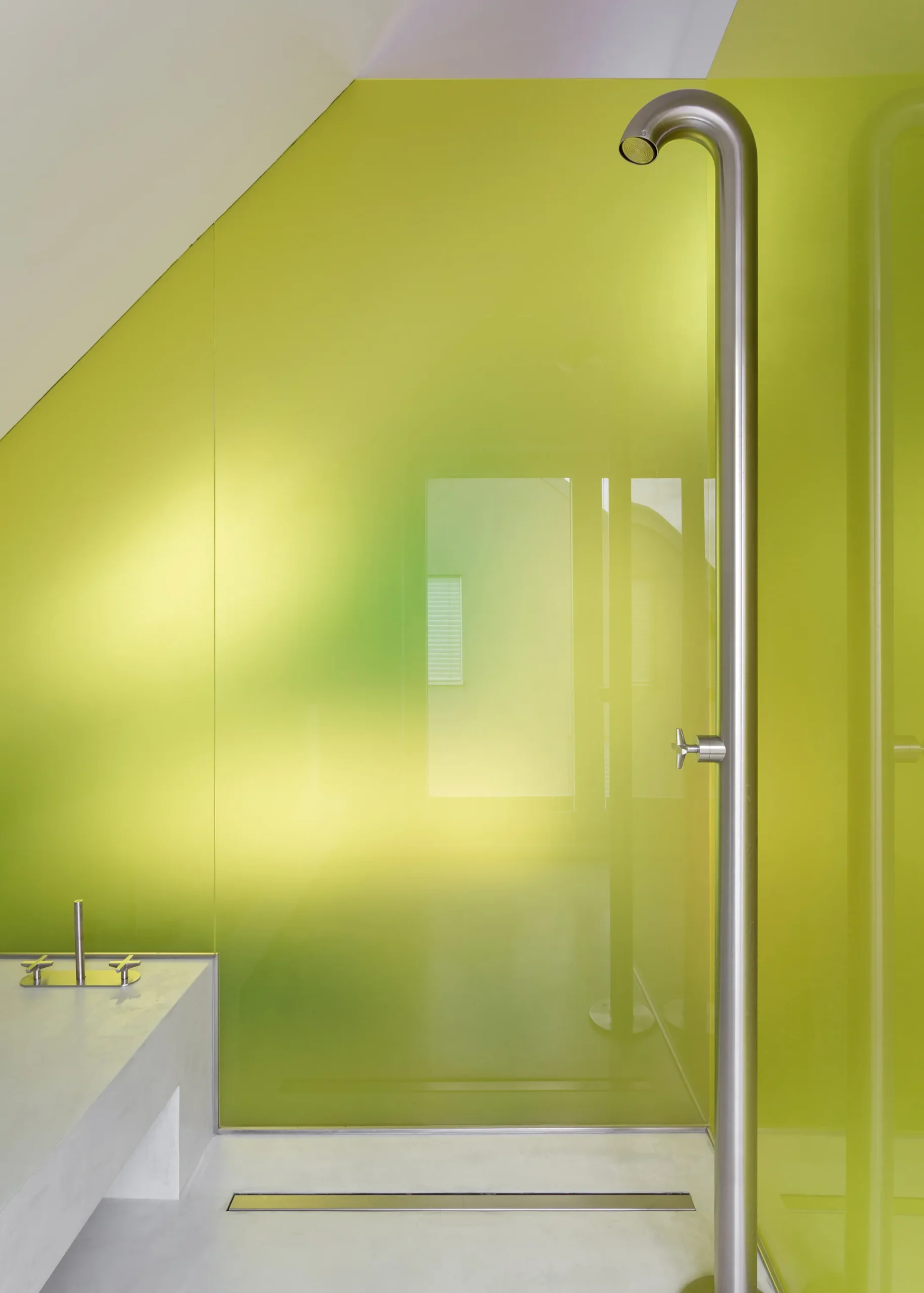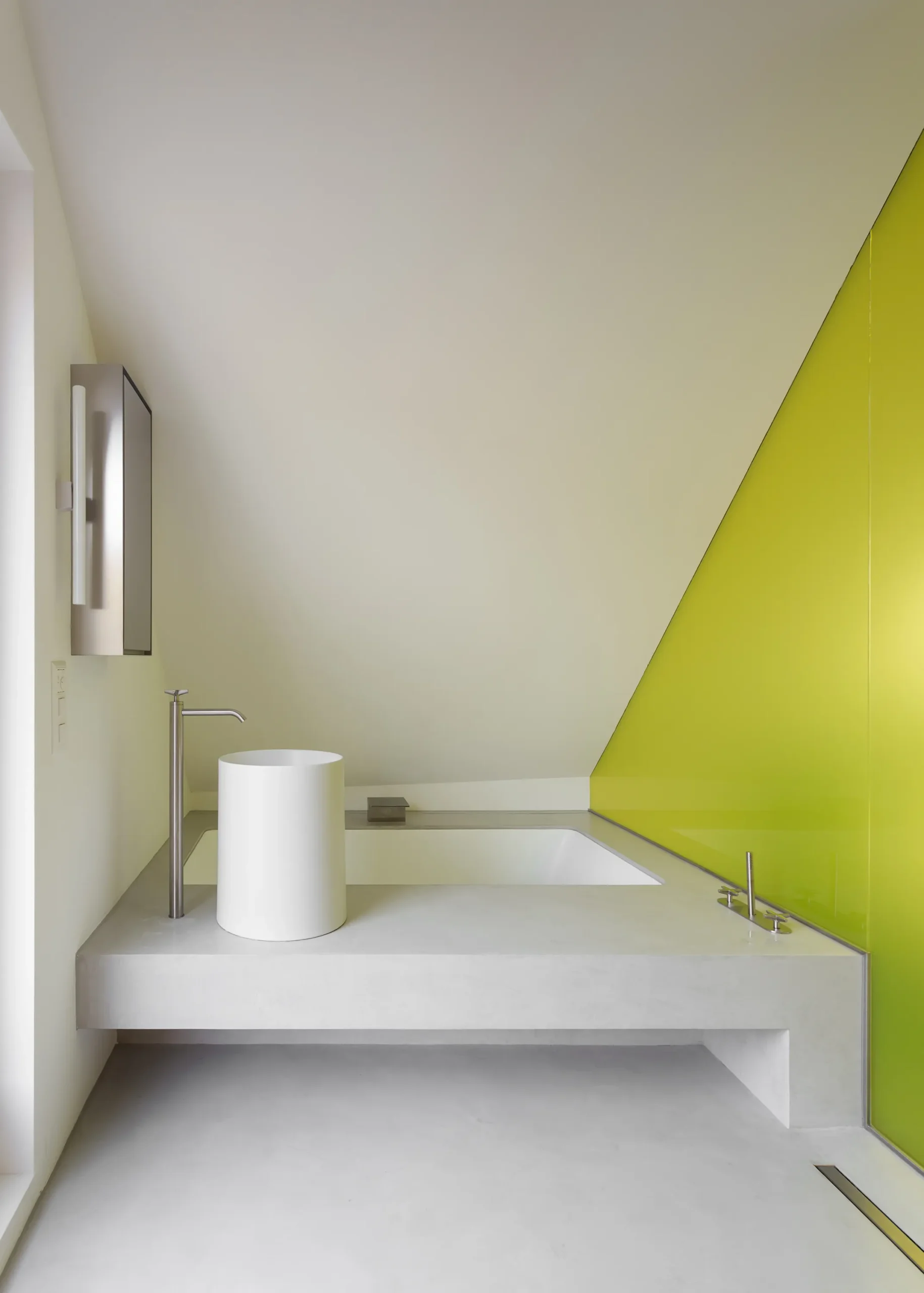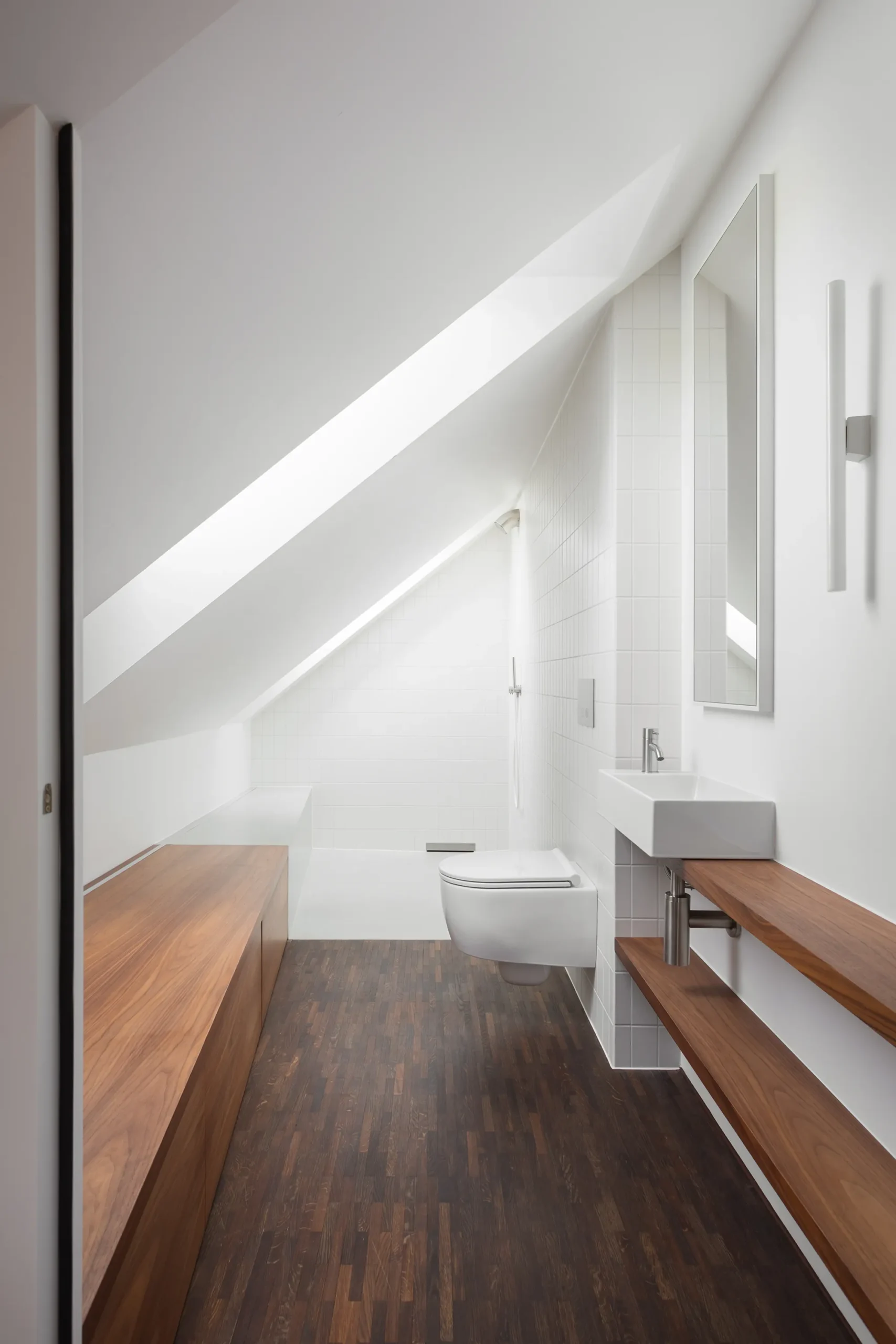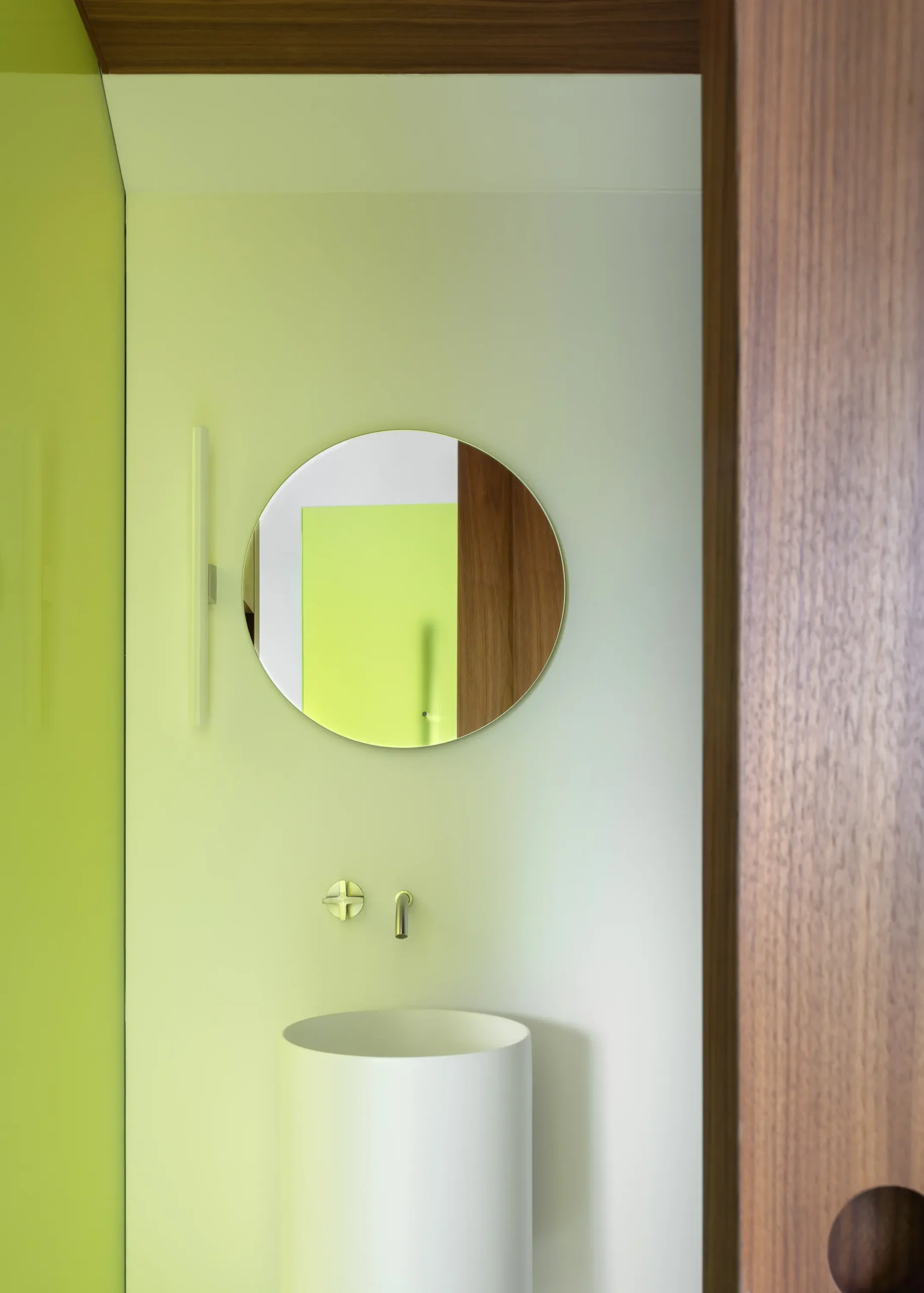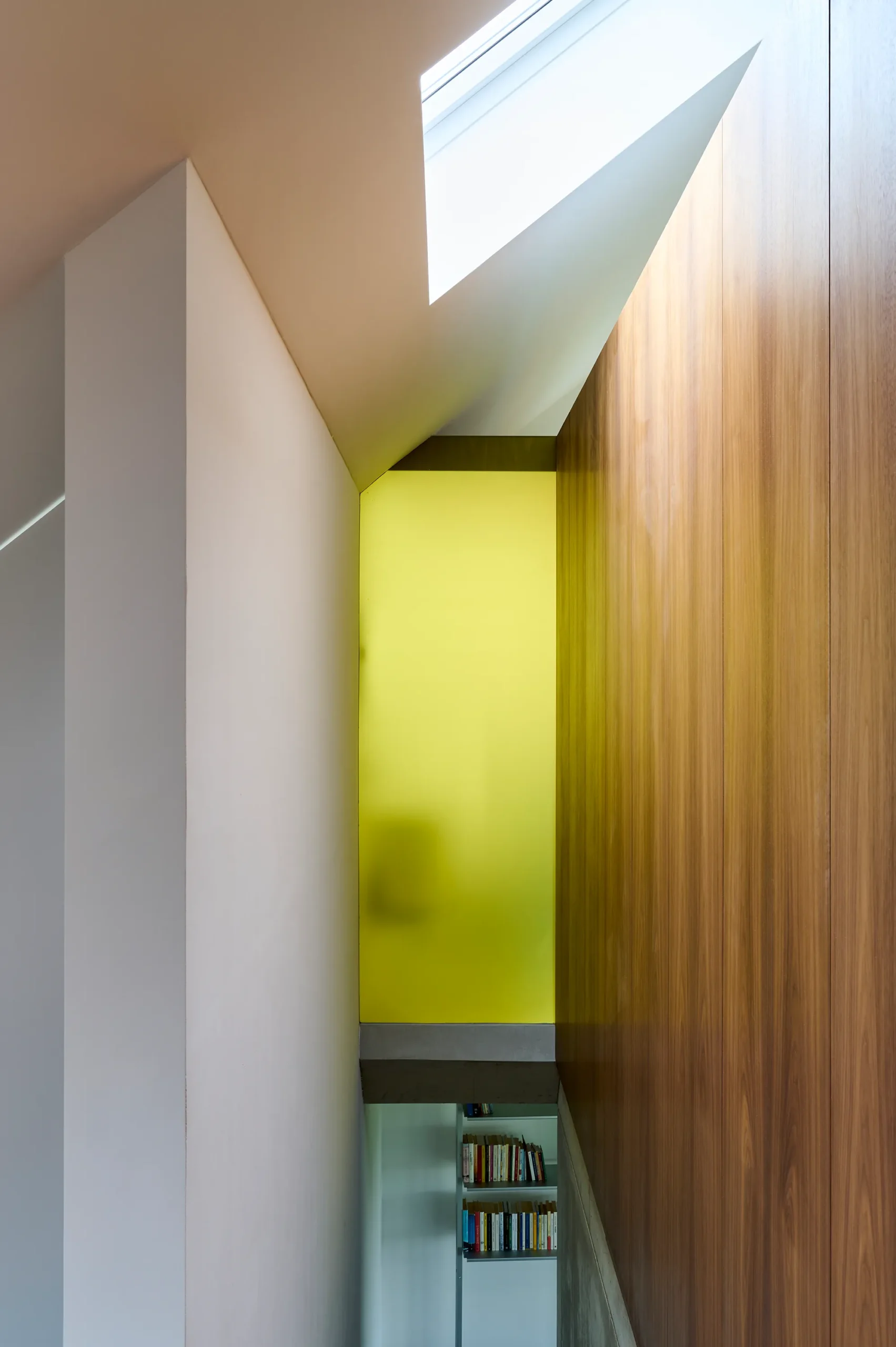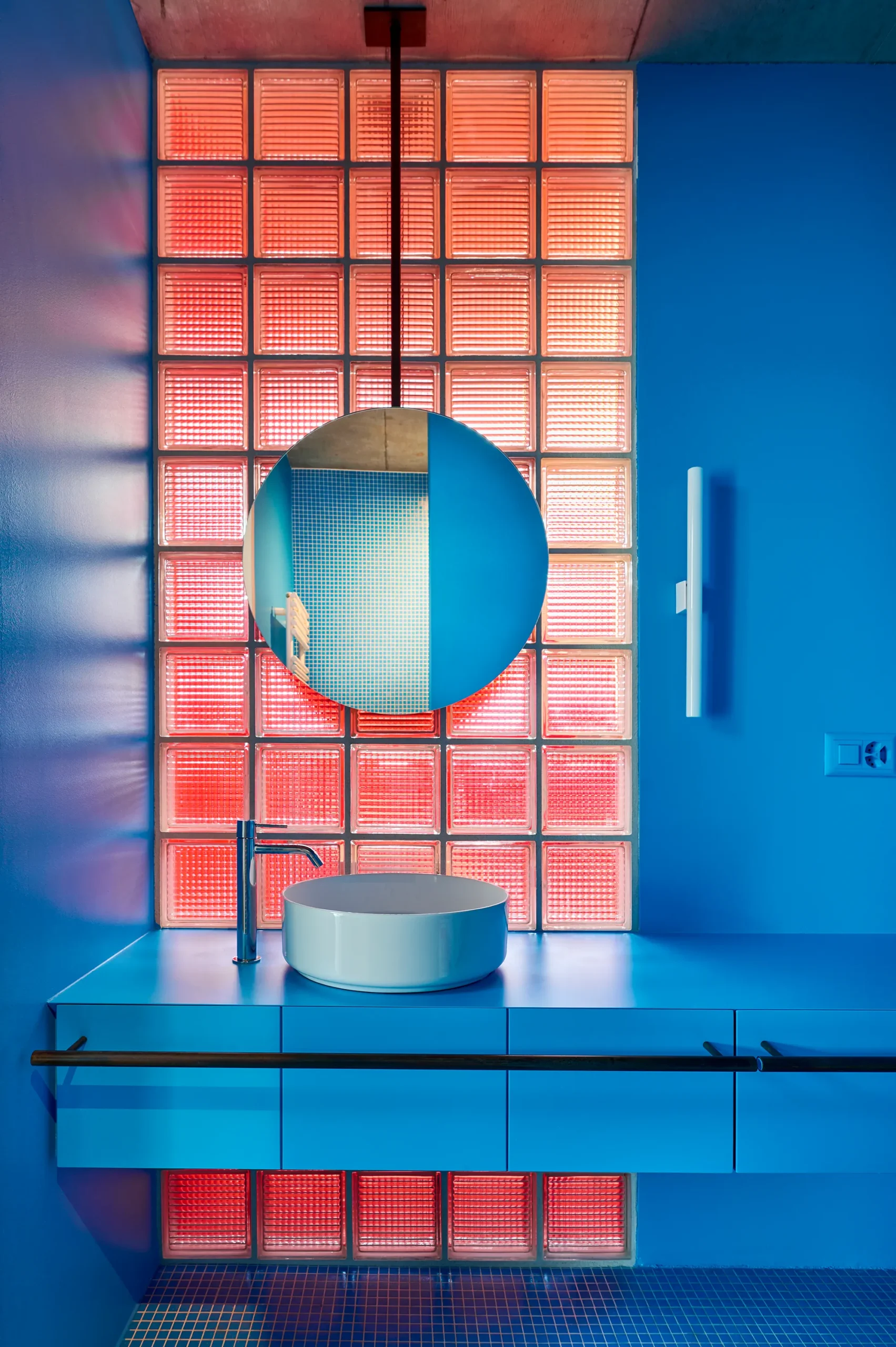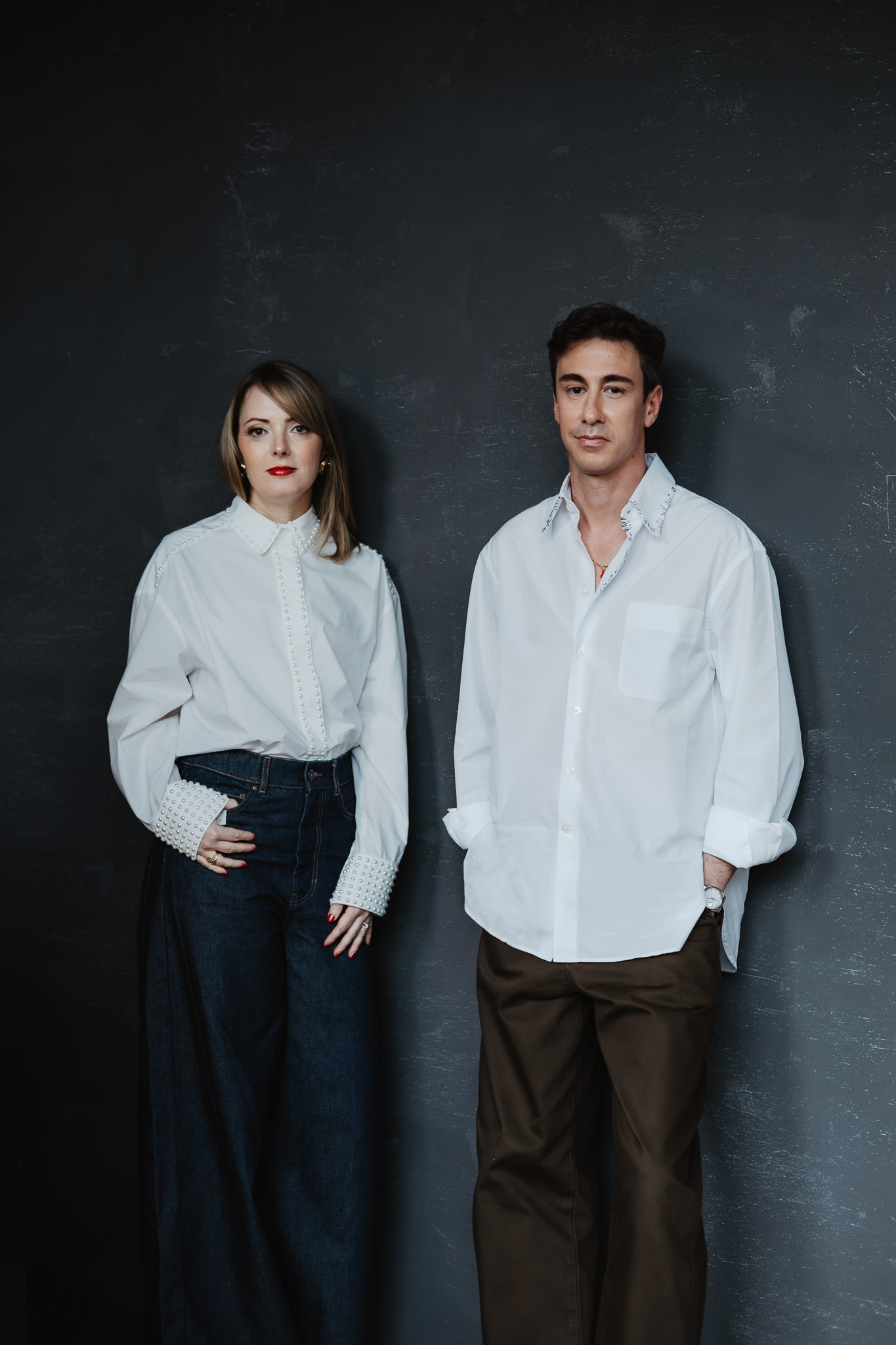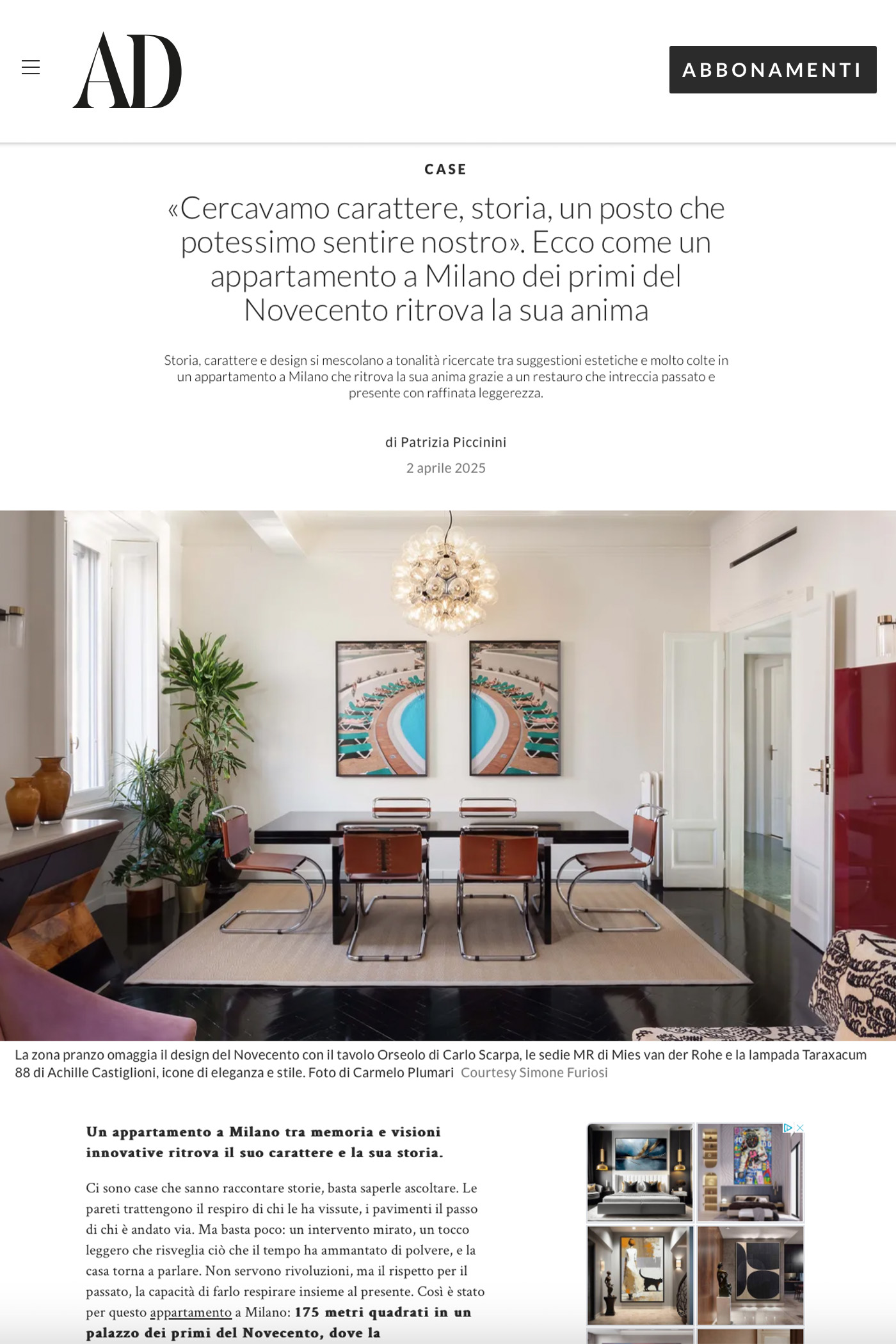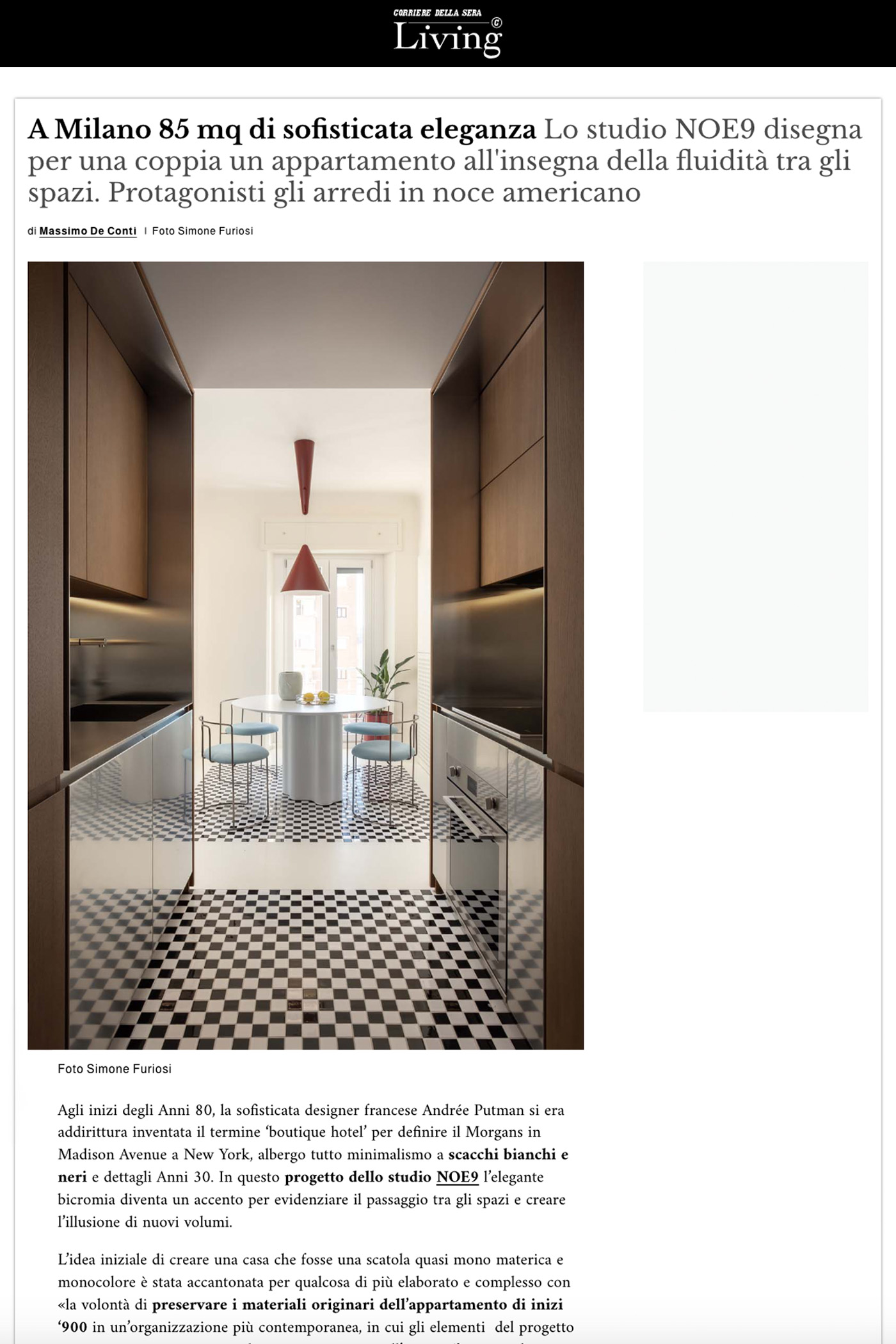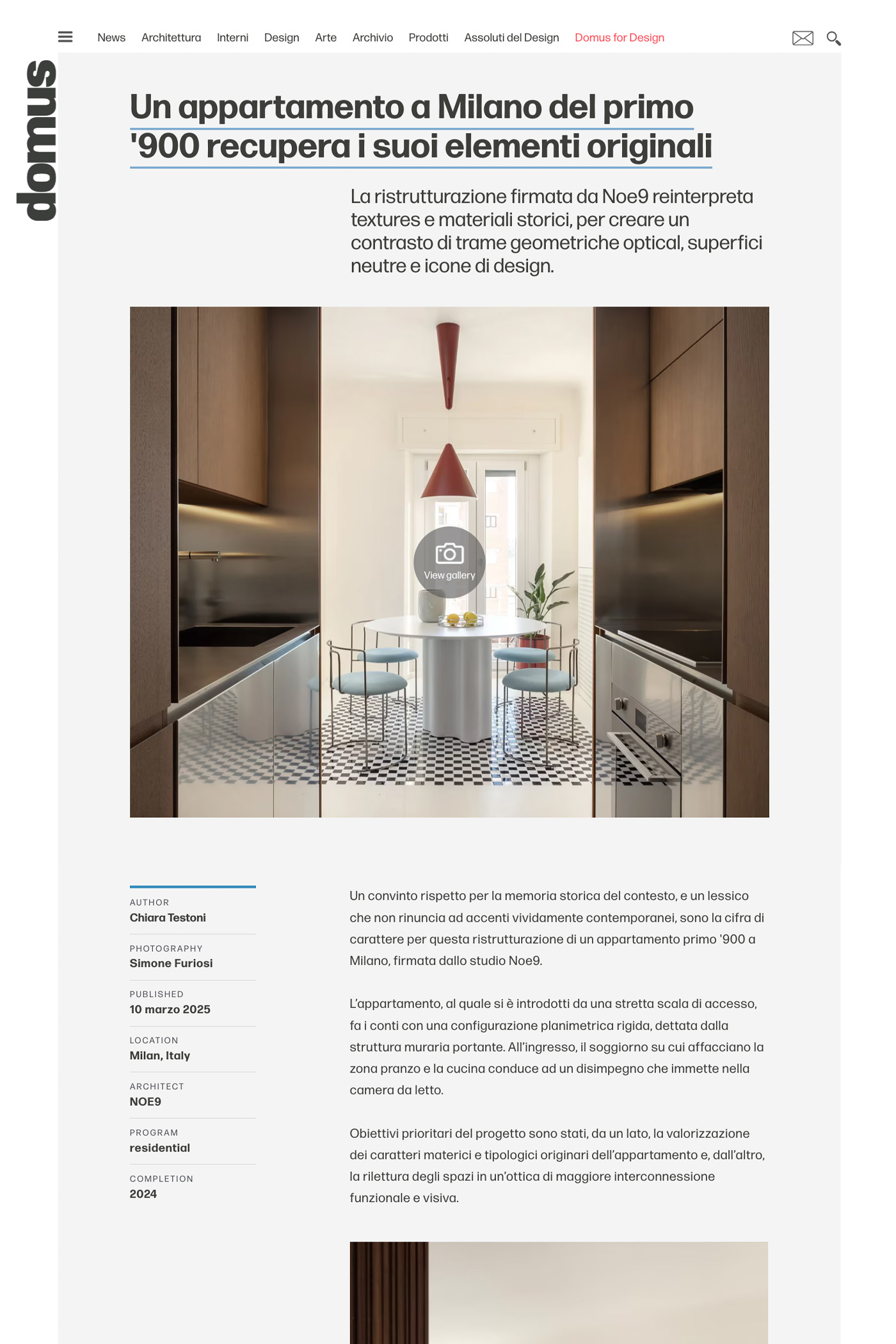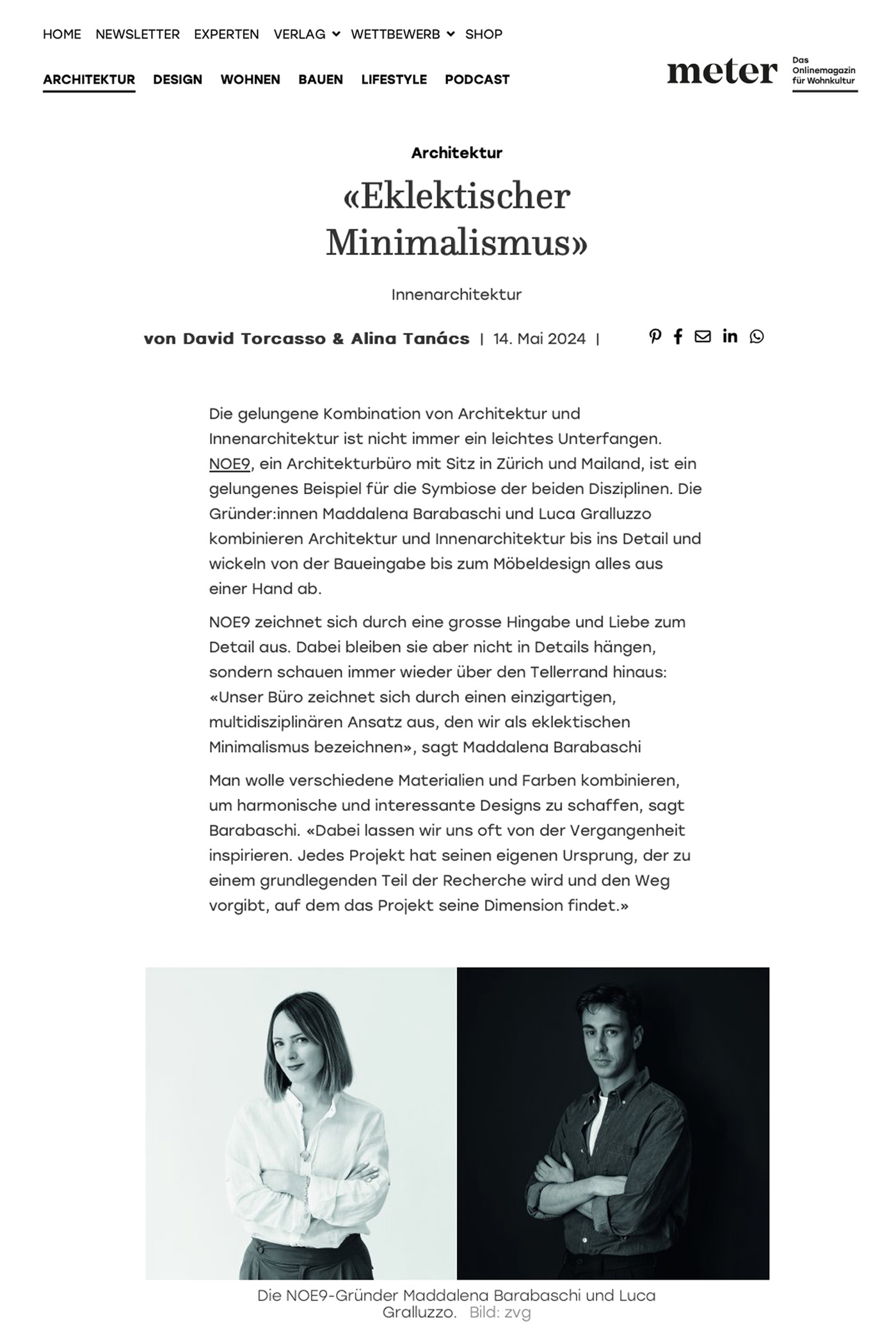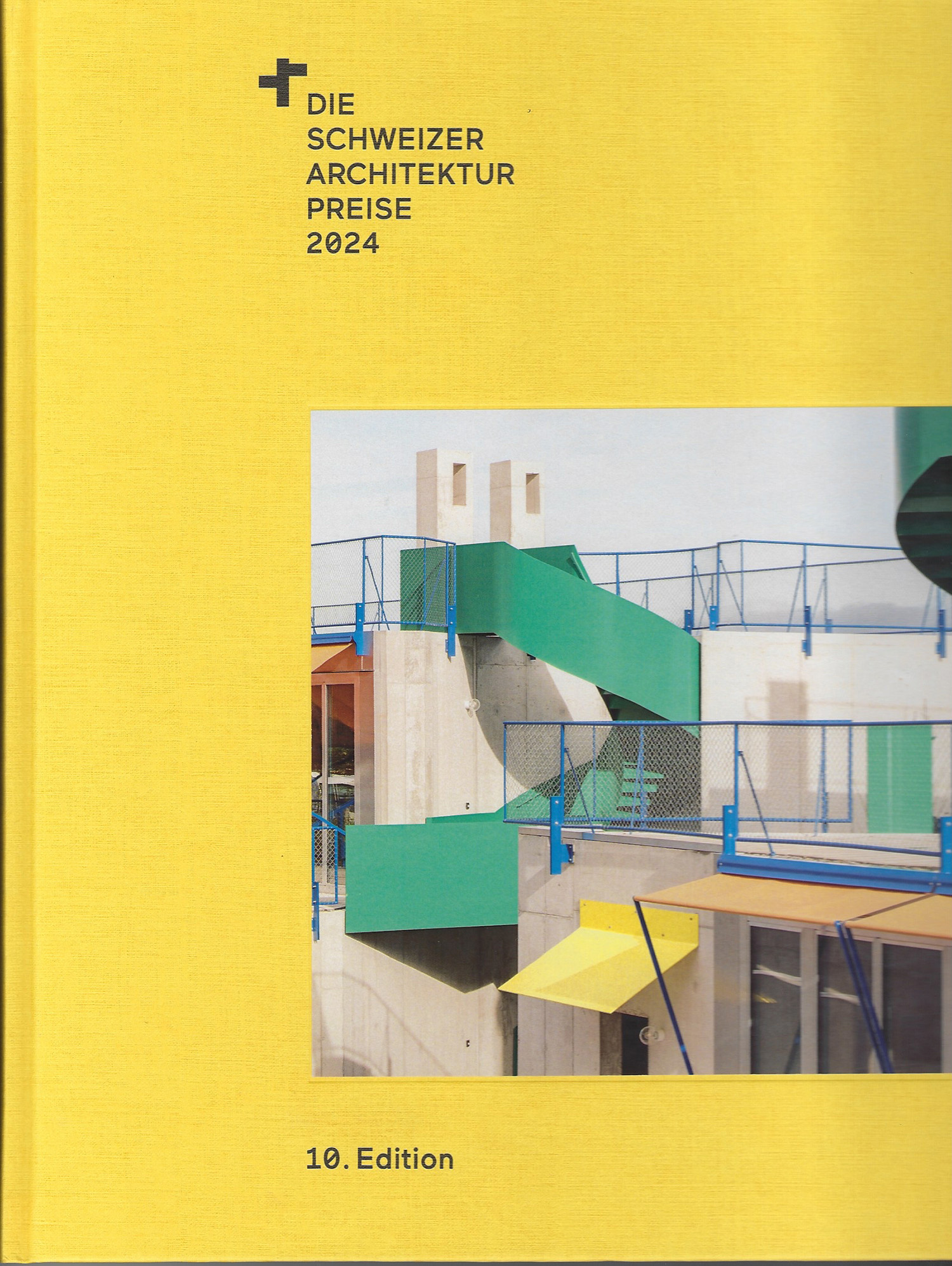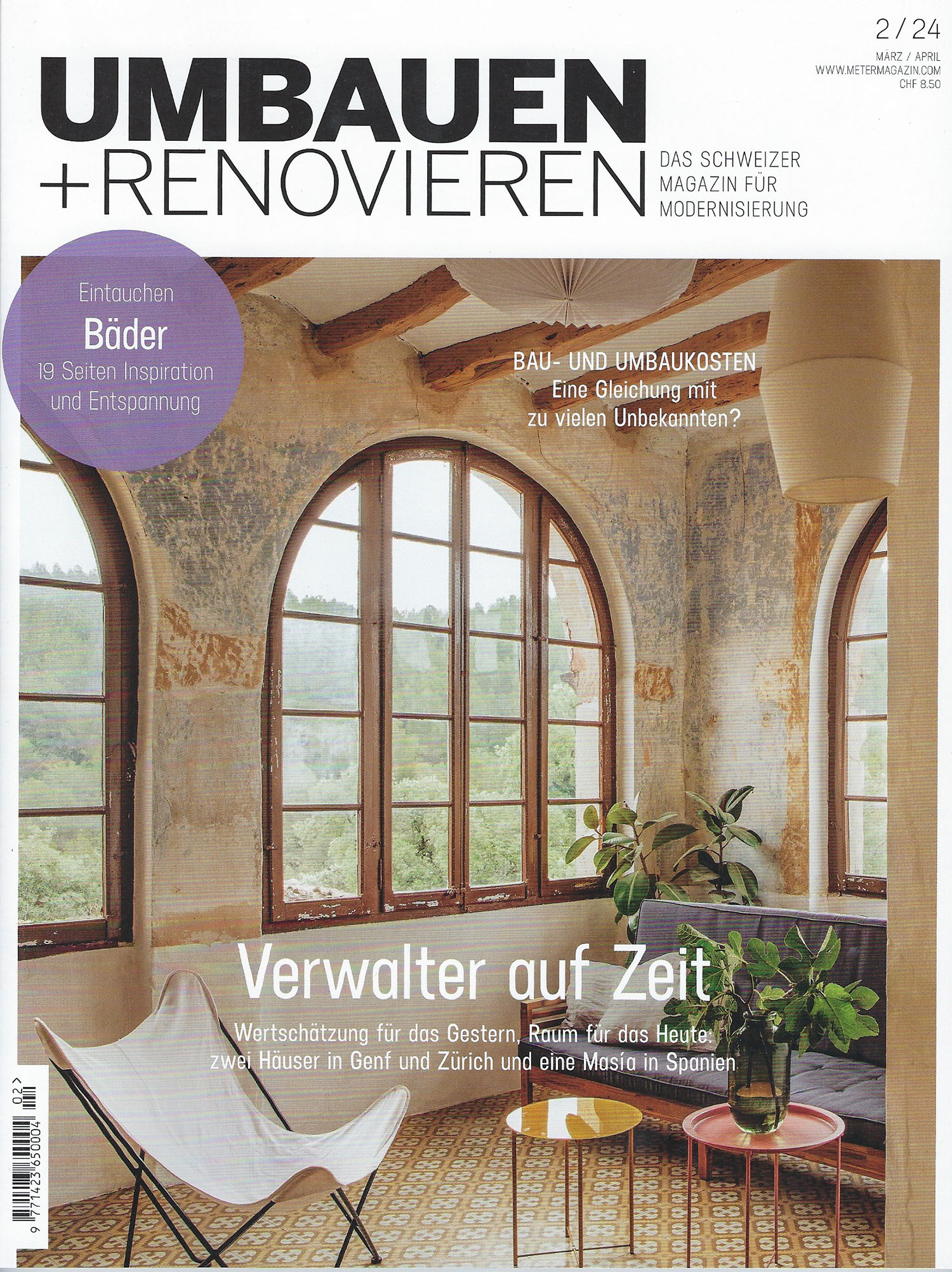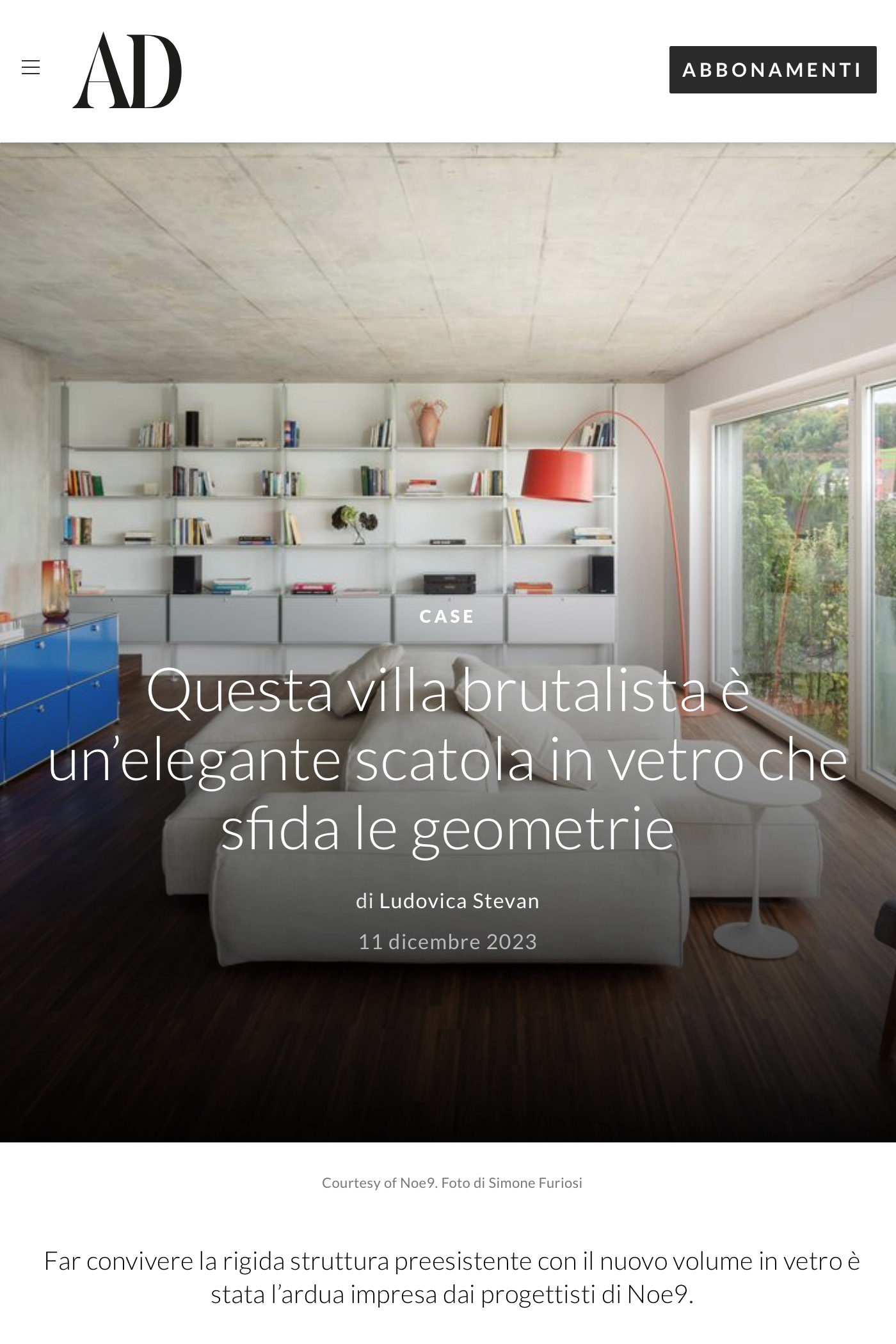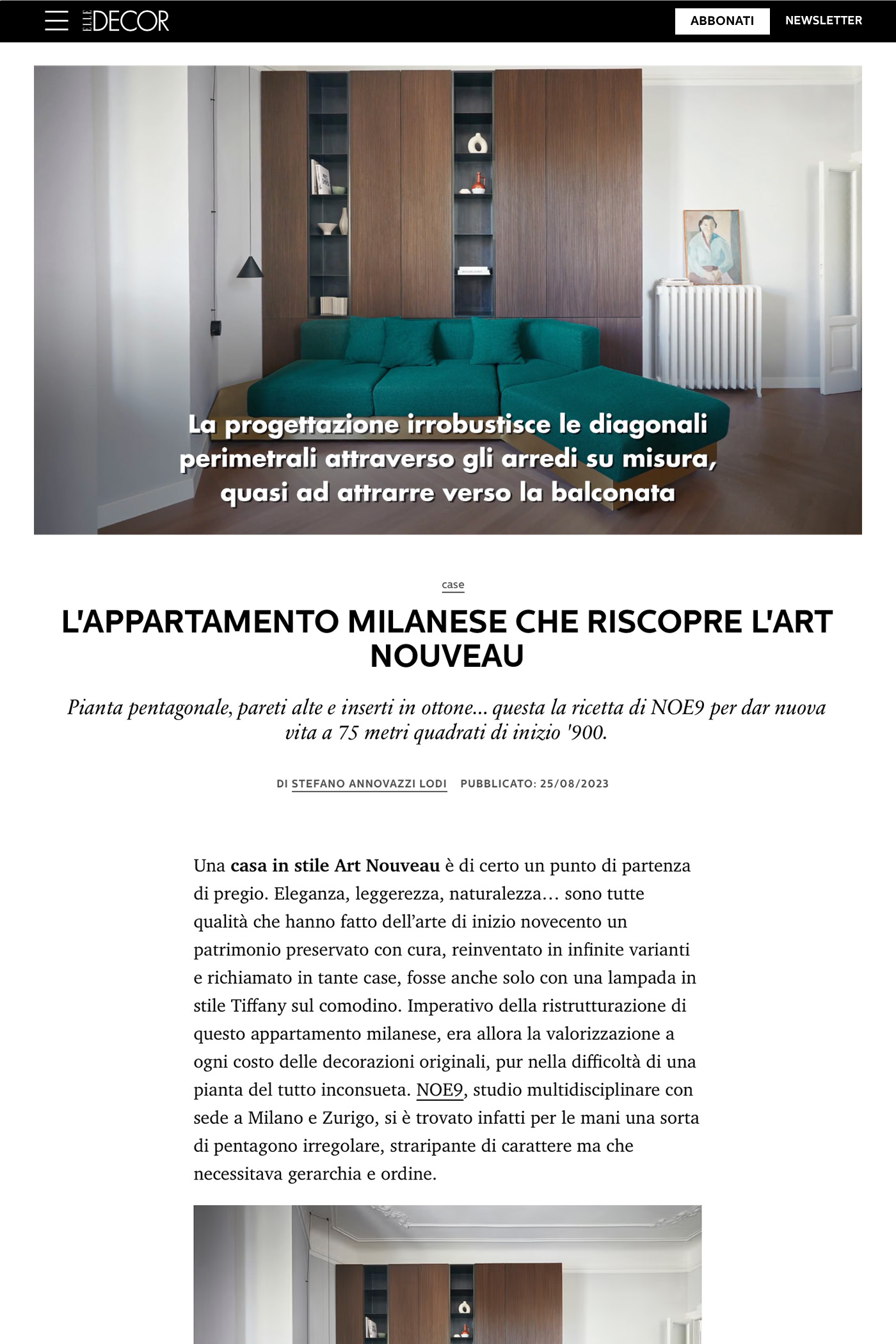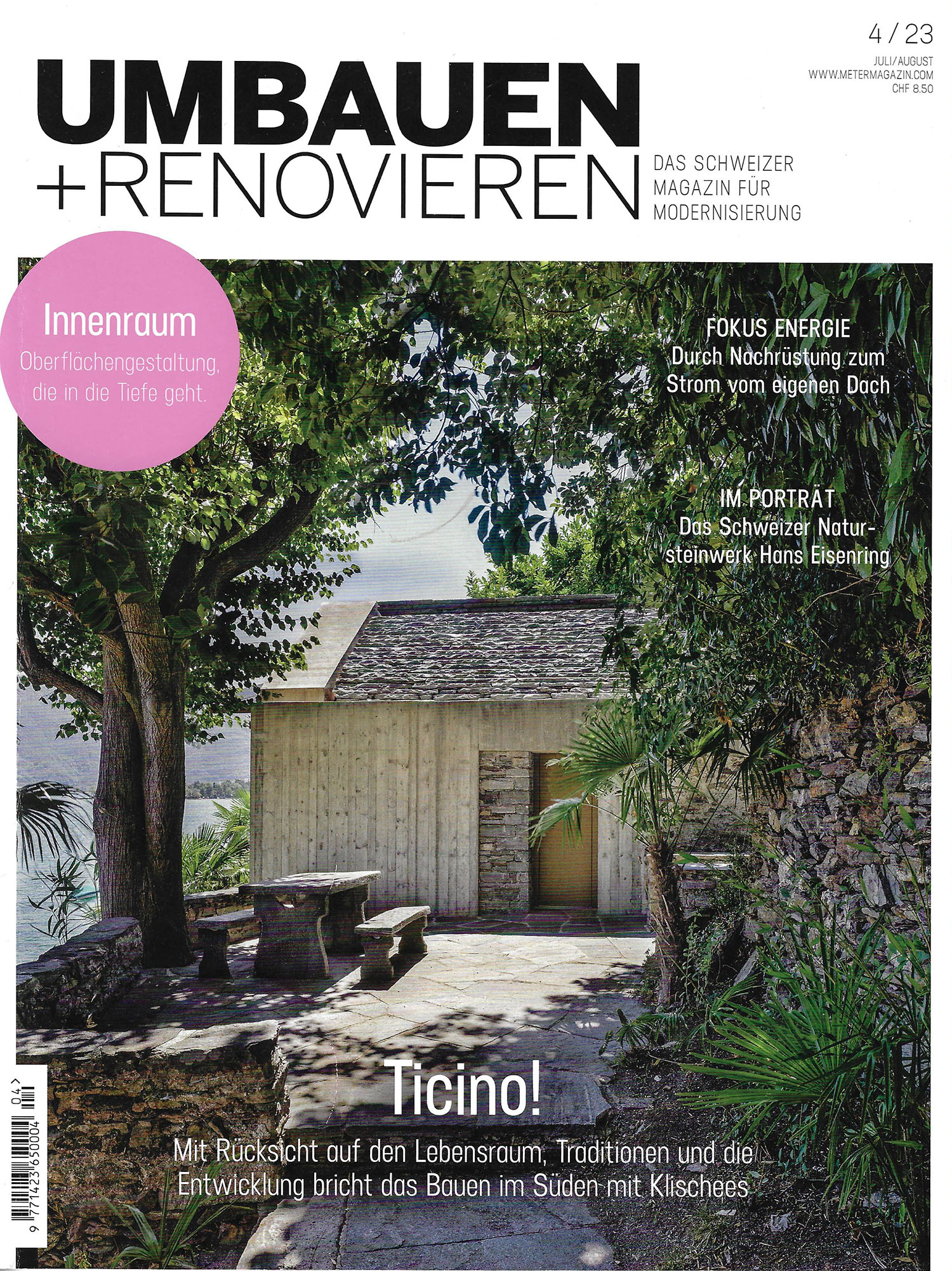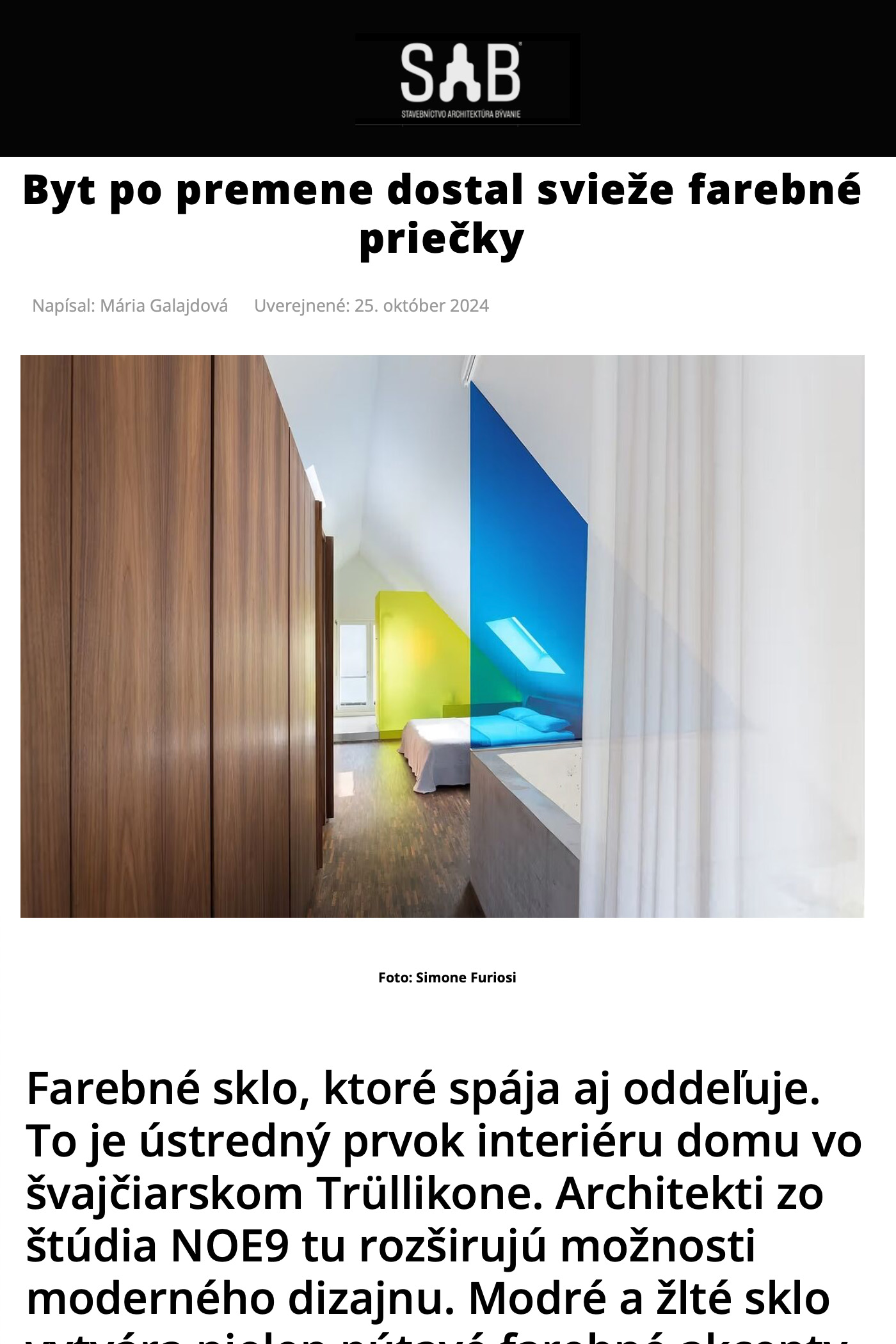
Residential
2023
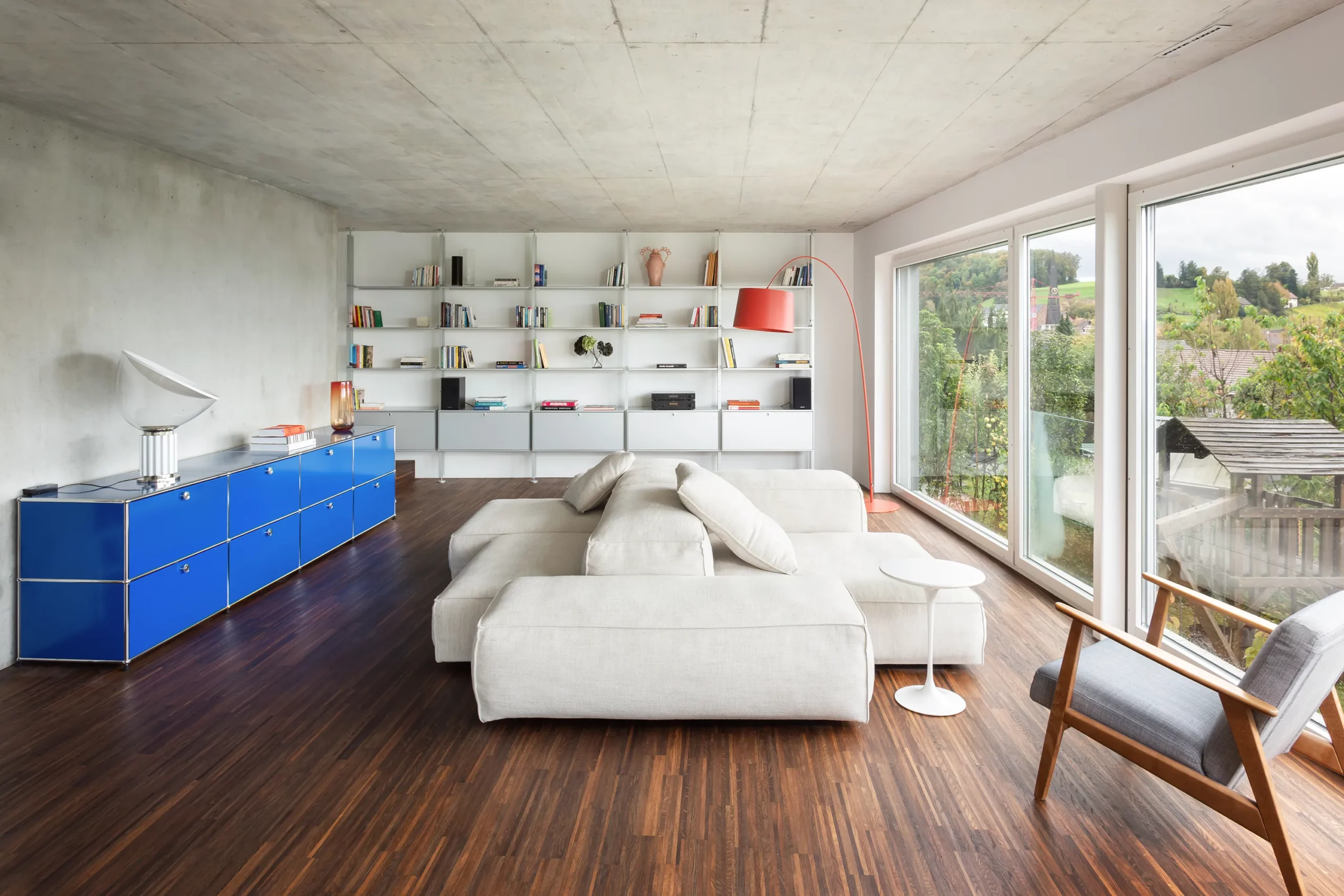
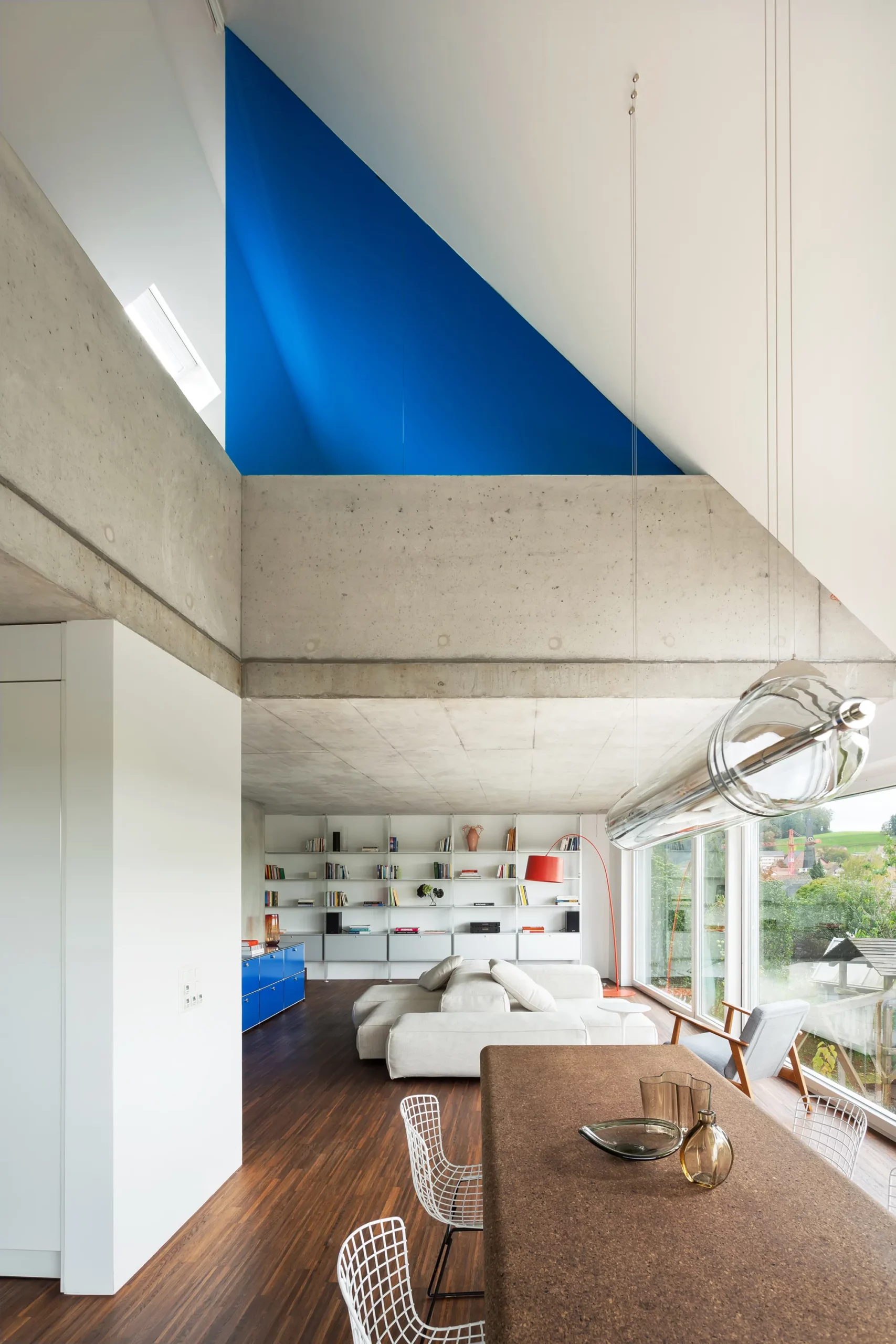
260 sqm
Private commission
Photo by Simone Furiosi and Gerry Nitsch
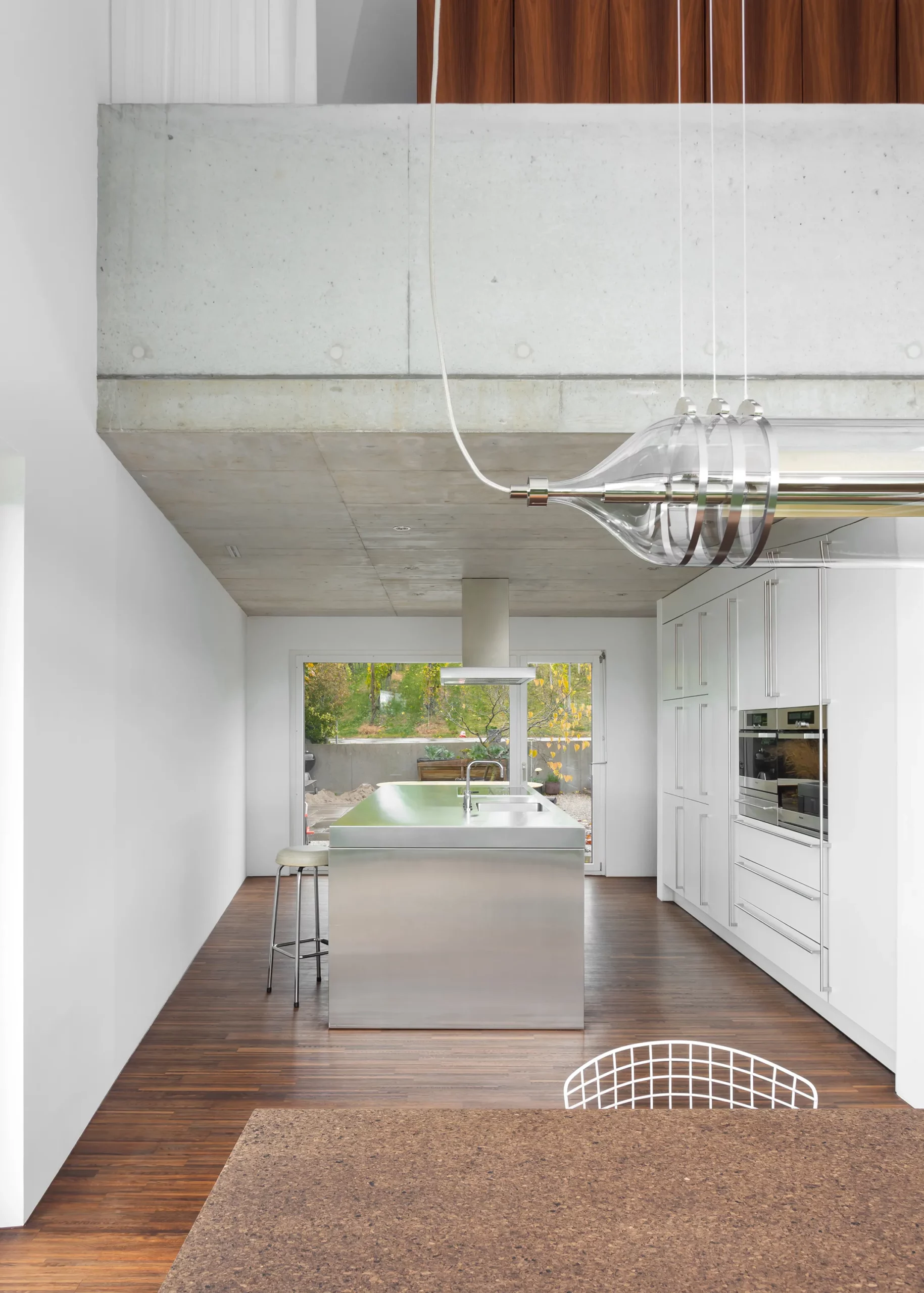
The renovation of a villa in Trüllikon, Zürich, Switzerland, aimed to preserve its original, asymmetrical open design while enhancing functionality and spatial flow.
The attic, previously an open and unusable space due to its sloping roof, was transformed into a master bedroom and office/guest area. The basement was redesigned into a unique, dedicated space for the client's three children.
The design challenge involved creating custom spaces within a complex existing layout. The solution integrated "micro-architectures," volumes, and surfaces into the open floor plan, creating distinct yet interconnected zones.
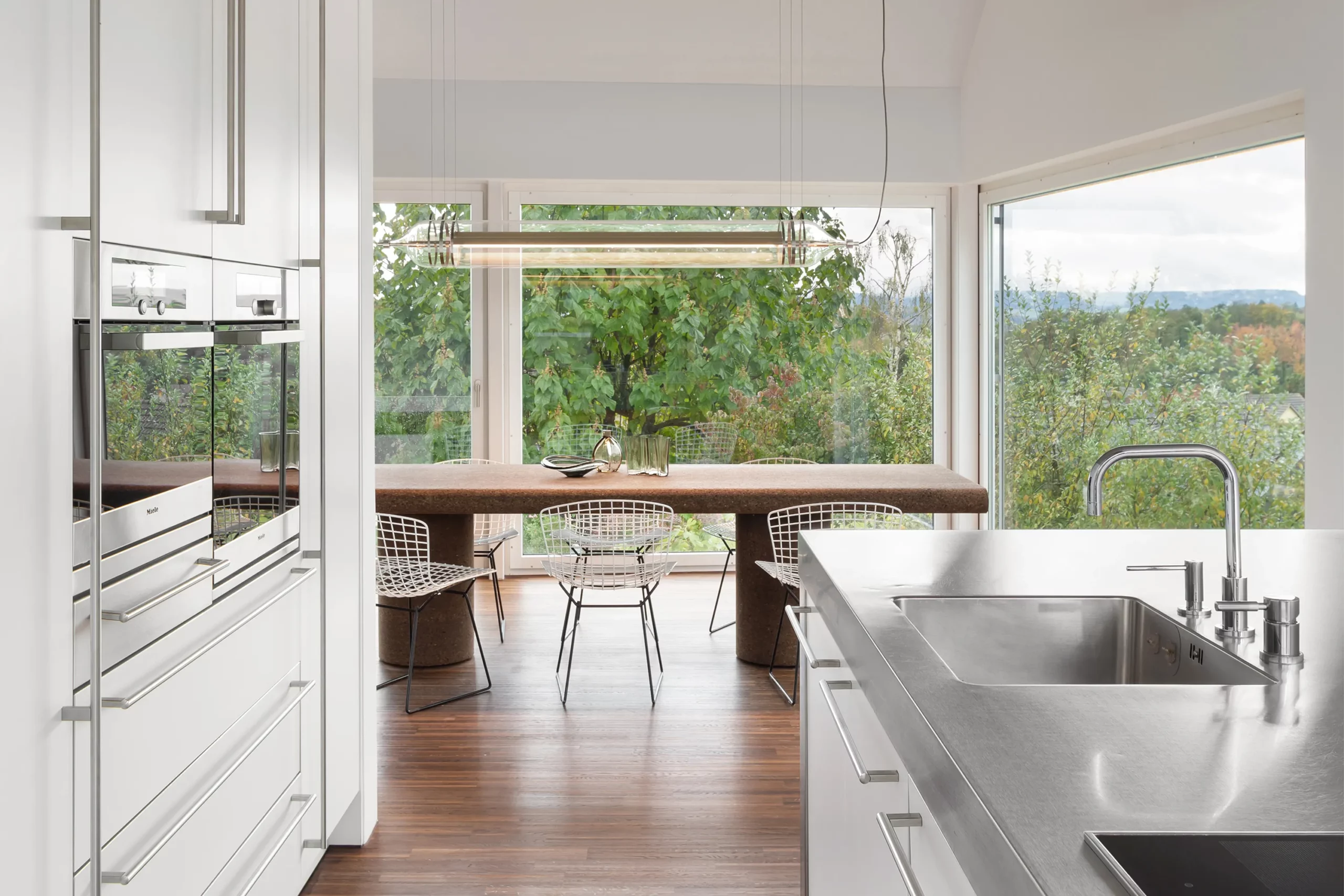
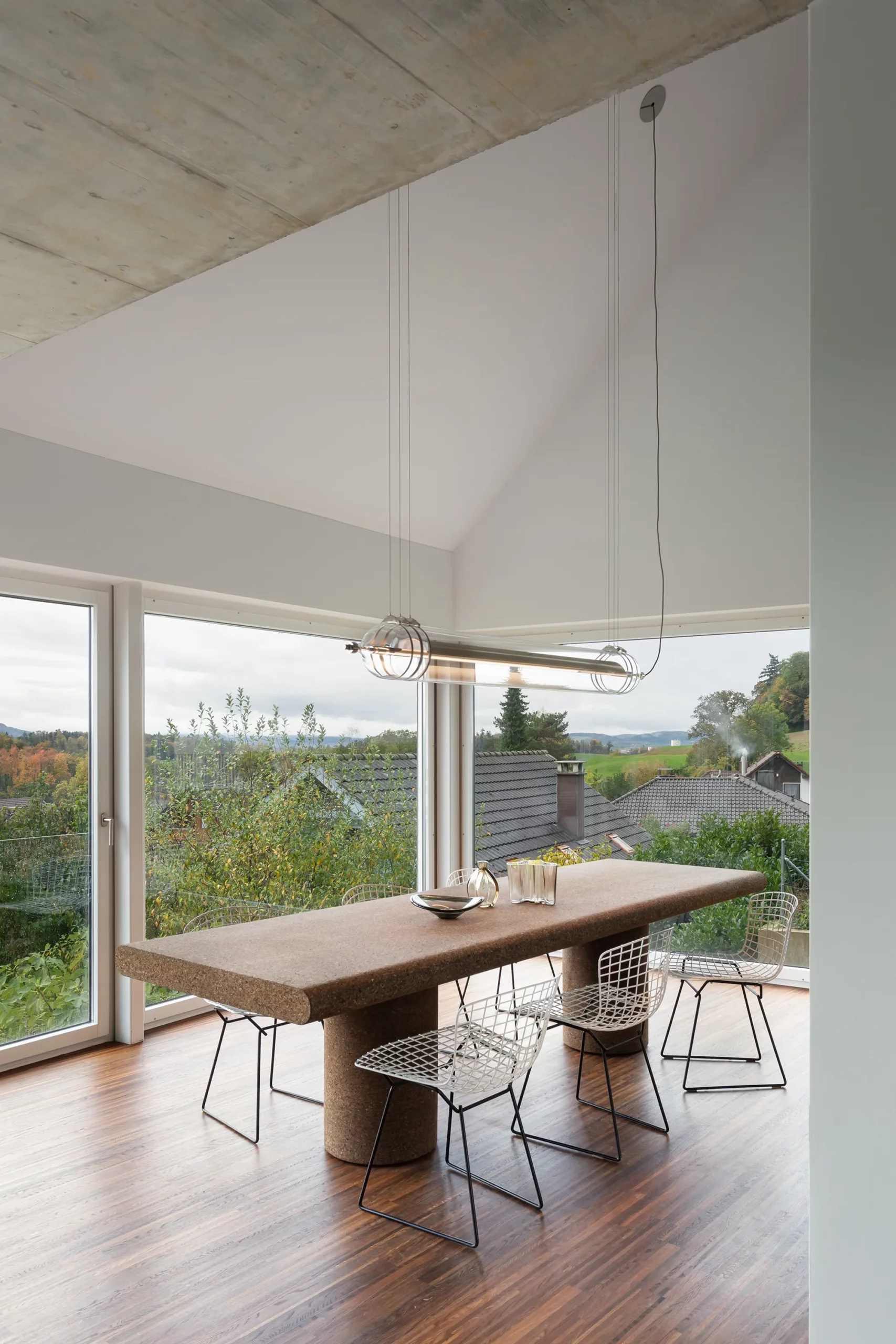
A prominent design feature was a massive Canaletto walnut volume, which acted as both a separator and connector on the top floor. This multifunctional element serves as a wardrobe, vanity unit, and toilet, and its imposing presence is visible from the living floor below. The intersection of this volume with the villa’s perimeter created a "water area" in the attic, where a concrete slab bridges the existing and new spaces.
Glass architecture played a vital role, enhancing the connection between the interior and the surrounding landscape. The transparency of glass partitions maintained the open feel while subtly dividing spaces.
The design also emphasized a seamless relationship between the interior and the exterior. Inspired by the surrounding vineyards, the shower in the guest bathroom is integrated into the roof’s thickness, with a new opening allowing the outdoors to become part of the interior. The use of colored glass in yellow and blue adds dynamic elements, creating plays of light and color that transform the atmosphere throughout the day.
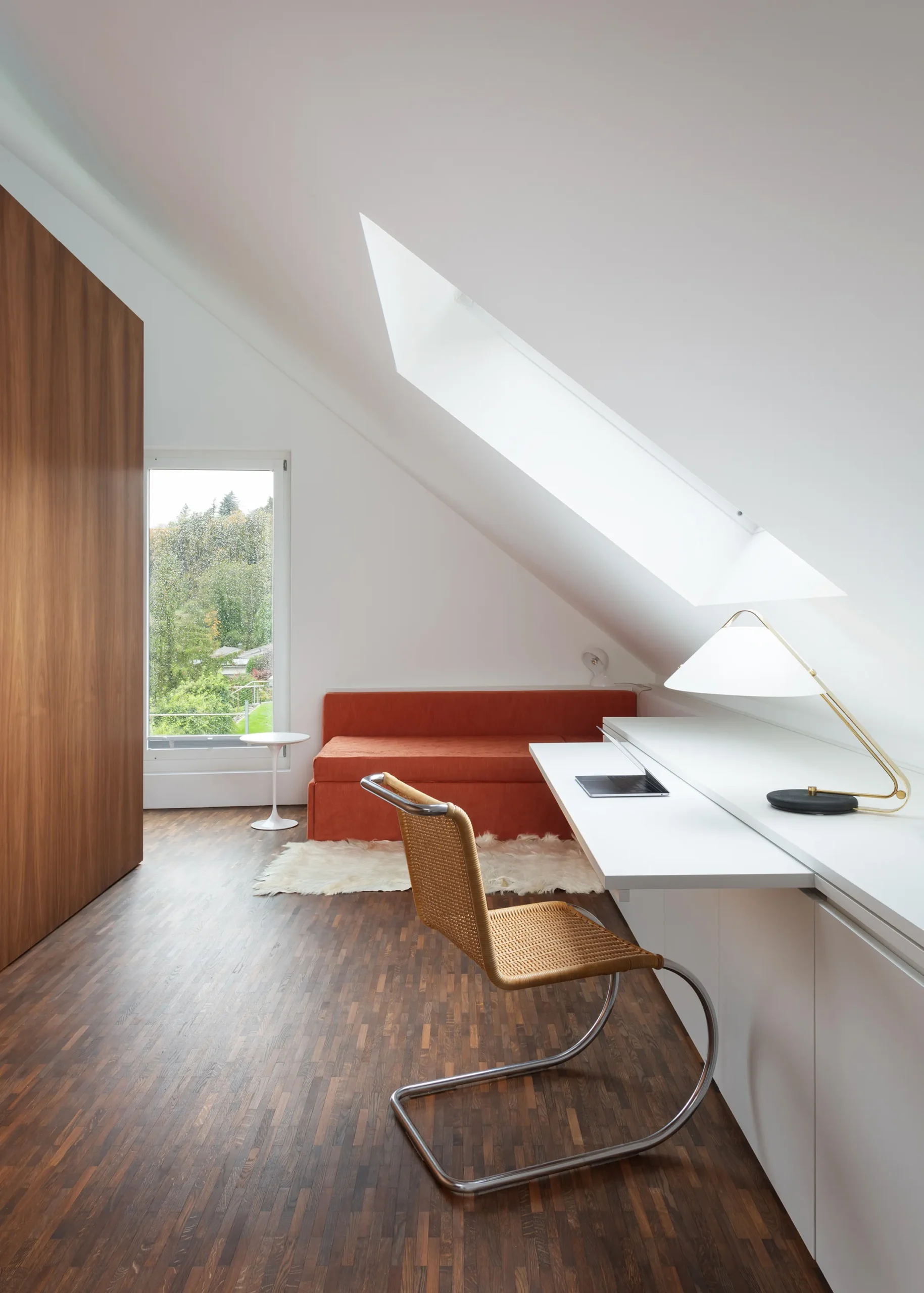
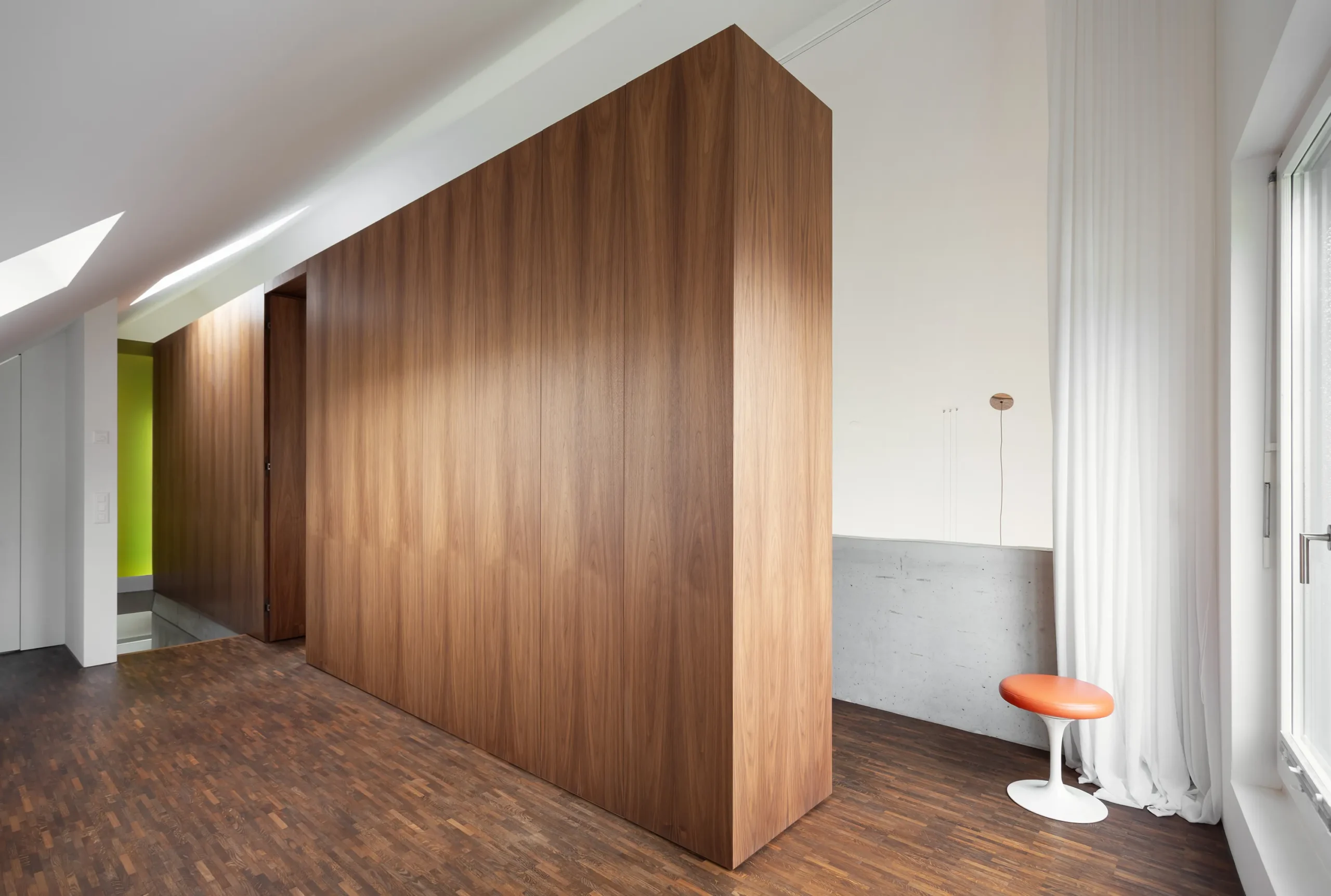
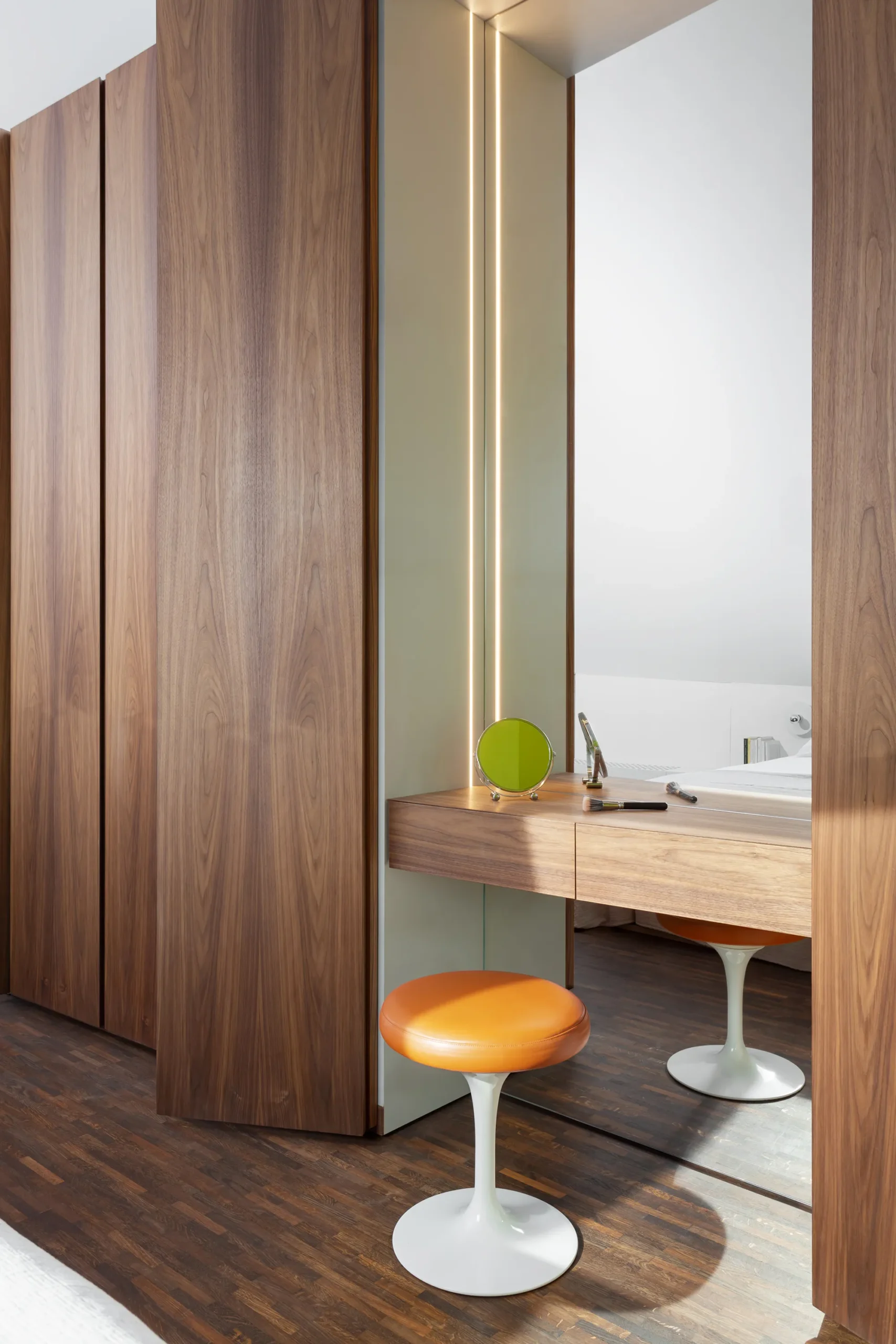
The material palette, including Canaletto walnut, glass, and concrete, was chosen to dialogue with the villa’s original architecture while introducing contemporary elements.
Lighting was carefully designed to enhance the space, with decorative lighting adding emotional warmth, while functional lighting subtly highlights the sloping ceilings, making them appear to float.
The furniture design also reflected this balance of form and function, with carefully selected pieces that resonated with the client’s personal story and cultural background. The island sofa, Living Divani, in the living area created a shift in perspective, allowing the clients to fully appreciate the natural surroundings, reinforcing the continuous visual connection between the villa’s interior and its vineyard-filled exterior.
